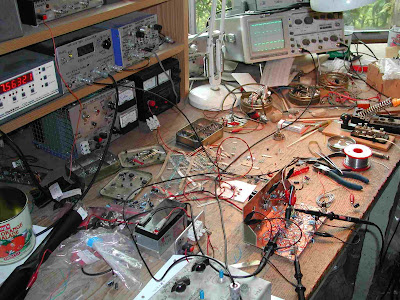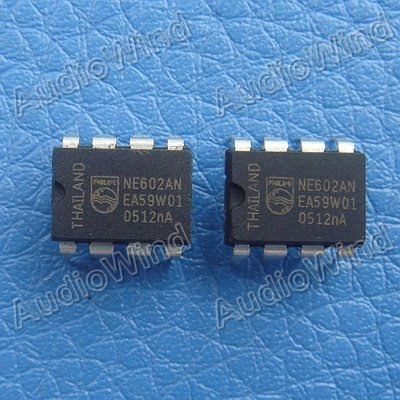 Tim Walford, G3PCJ, offers a really nice line of ham radio kits. I like the names of the products, and of course I really like the DSB kits. The photo above is the workbench on which these rigs are created. Tim also runs a Construction Club and puts out an excellent quarterly newsletter called "Hot Iron." I just received the latest issue, which is a particularly good one -- more about this in SolderSmoke 109.Here is a list of Tim's kits:AMU
Tim Walford, G3PCJ, offers a really nice line of ham radio kits. I like the names of the products, and of course I really like the DSB kits. The photo above is the workbench on which these rigs are created. Tim also runs a Construction Club and puts out an excellent quarterly newsletter called "Hot Iron." I just received the latest issue, which is a particularly good one -- more about this in SolderSmoke 109.Here is a list of Tim's kits:AMU Matching bridge and T match for 10 - 160m
Audio Amplifier General purpose amplifier for driving a loud speaker
Audio Extras Adds AGC and good CW facilities to a phone TCVR
Brendon Small DSB 1.5W phone transceiver for 80m
Brent Small 1.5W CW transceiver for 80m
Chirnside Regen RX, crystal controlled AM TX, for any band to 6m
5D Counter Five digit frequency readout
Dual Low pass filter Pair of relay selected Low Pass Filters
Fivehead Single band 1.5W SSB phone TCVR for 20 - 160m
Kilmot Double sideband 80m 1.5 W phone TX
Kilton 1.5 Watt CW TX - 20 to 80m
Kingsdon 5 Watt phone SSB and CW transmitter to go with Midney
Knapp Single Band regen TRF - 3.5 to 15 MHz
Knole Single Band DC RX, 20 to 80m
Linear 10 Watt RF amplifier for all nominal 1.5W rigs
Midney Simple single band superhet RX for any band 20m to 160m
Mini mix Mixer kit for VFO schemes or as receive converter
Notch filter Variable frequency notch or peak audio filter
Speech processor Boosts average signal level under difficult conditions
Trull Medium Wave regen TRF for newcomers, can also do HF
Two Tone oscillator Provides audio tones for setting up SSB rig
Washford Crystal controlled 1W CW TX for 20, 40 and 80m
Willet Simple direct conversion RX for 20, 40 and 80m
Here is the website of Walford Electronics: http://walfordelectronics.co.uk/
 http://www.soldersmoke.com
http://www.soldersmoke.com



































